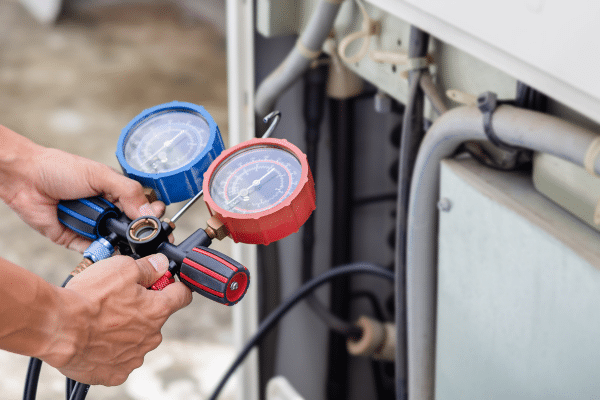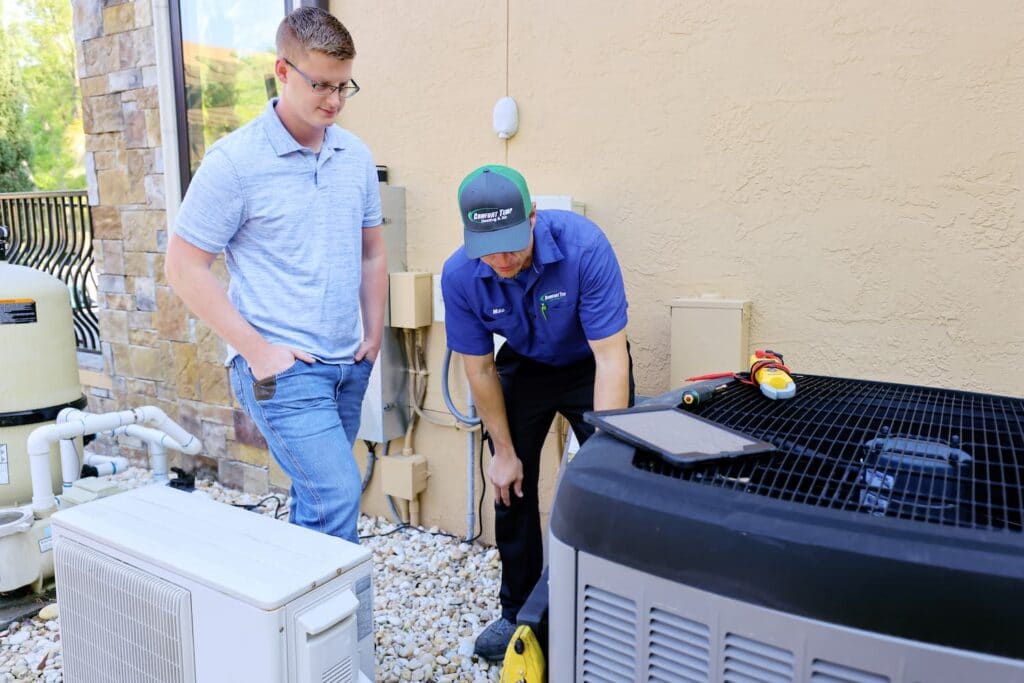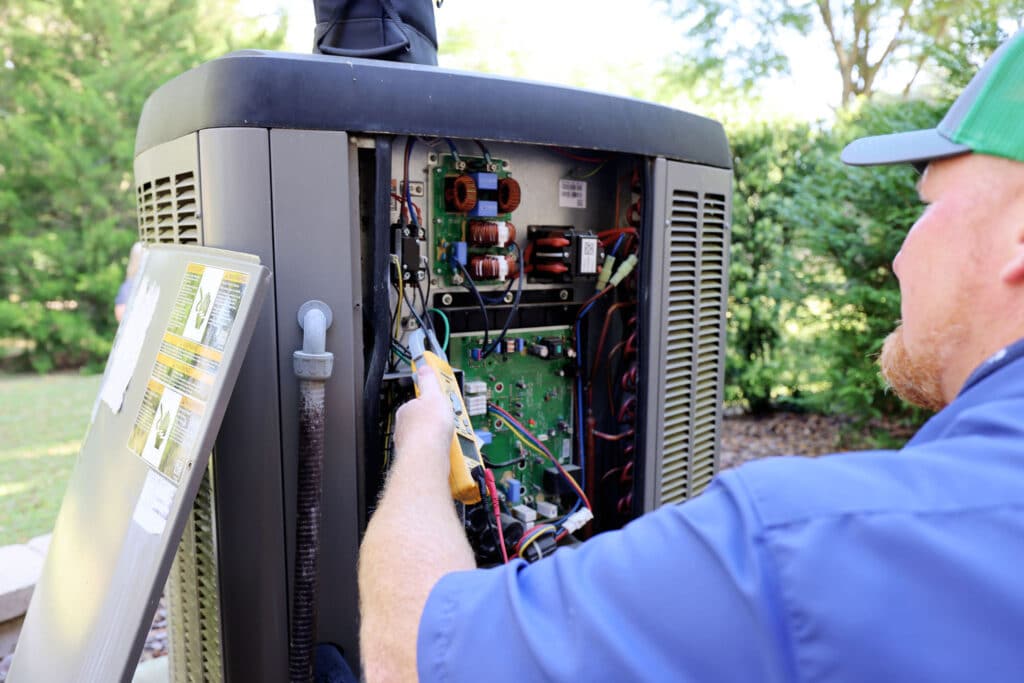Recently, the Environmental Protection Agency (EPA) made some AC refrigerant changes for homeowners and commercial businesses that will take effect on January 1, 2025. What are these coming changes? How does this affect you and your home? We’re here to help answer all these questions and what the new regulations state!
What Did the EPA Change about AC Refrigerant?
Since 2010, AC units have been using R-410A refrigerant. This refrigerant was mandated by the EPA to replace Freon, due to the concerns that Freon was contributing to carbon emissions and harming the ozone layer.
Now in 2025, the EPA is once again updating the refrigerant mandates to further protect the environment. Instead of R-410A refrigerant, new AC units and heat pumps will be required to use R-454B or R-32 A2L refrigerant due to their lower global warming potential. This applies to both residential buildings and commercial buildings.

The Why Behind the 2025 HVAC Refrigerant Change
Over the past few decades, the EPA has become increasingly concerned about the environmental impact of HVAC, especially as it relates to global warming. This is part of the reason Freon use was stopped and replaced with R-410A refrigerant. While R-410A refrigerant was a better option, it still had some negative effects on the environment and the ozone layer. The new refrigerant options have the potential to reduce the GWP by 78%, helping create a better environment by making a simple switch in refrigerant.
How Does the AC A2L Refrigerant Change Mean for You?
So how does this impact you and your home? On the positive side, if you have an HVAC system that already uses R-454B or R-32 refrigerant, you can expect lower energy bills and a future-proofed system since your HVAC will meet modern requirements. On the other hand, if your HVAC system uses R-410A refrigerant, you may have to replace your system in the near future.
While the EPA’s change takes effect on January 1, 2025, it will be a slow rollout of the new requirements. In other words, you won’t have to replace your system before that date or, even potentially, for a while afterward. R-410A refrigerant will still be available as well as the parts for the HVAC systems that use it. However, as time goes on, these resources may become more and more scarce.

Ultimately, you have two choices:
- Replace Your HVAC before 2025. If your unit is old, damaged, or has performance issues, replacing your HVAC now may be your best option. Once the change takes place in 2025, supply chain issues may cause delays with your replacement, and supply and demand can cause an increase in the price of your new unit. By getting ahead of the curve, you can replace your AC that’s already on the way out and avoid any complications from the change.
- Wait It Out. If your AC is working well or fairly new, it may be best to wait to replace your AC unit. Once the change hits, many homeowners, manufacturers, and HVAC technicians will be busy trying to meet the demands of the new requirements. However, if your system still has several years of life left, the hope would be that those complications wouldn’t be as prevalent by the time you need to replace your system.
Make Sure Your AC Is Up-to-Date with Comfort Temp
If you want to get ahead of the curve and enjoy the benefits of the more energy-efficient A2L refrigerants required by the EPA in 2025, Comfort Temp is here to help! We can get you a new unit that meets the new Florida refrigerant changes. Stay up to date with the EPA’s requirements, and get a new HVAC system today!


